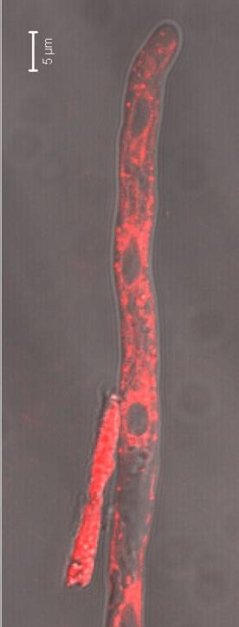
Project
GPCR-PIPKs a novel class of signaling molecules

Genome mining uncovered a number of Phytophthora genes encoding enzymes with aberrant combinations of catalytic and regulatory domains. One outstanding class of novel proteins comprises GPCR-PIPKs that contain an N-terminal 7-transmembrane domain (7-TM) typical for G-protein coupled receptors (GPCRs) combined with a phosphatidylinositolphosphate kinase (PIPK) domain at the C-terminus. GPCRs are membrane spanning receptors that transmit extracellular signals to the inside of the cell. The extracellular N-terminus acts as antennae that senses signals, and the intracellular C-terminus transmits the signals. PIPK is a key enzyme in phospholipid signaling. GPCR-PIPKs are unique for oomycetes. The finding that each Phytophthora species has twelve distinct GPCR-PIPKs nourishes the thought that Phytophthora has developed a unique sensing system that bypasses heterotrimeric G-protein signalling by direct activation of PIPK resulting in the production of phospholipid based second messengers. We use state-of-the-art methodology for further characterization of GPCR-PIPKs, in particular, their localization, catalytic activity and function. Since GPCR-PIPKs are likely to play a role in signal transduction, it is worthwhile to investigate their potential as oomycete-specific ‘drug’ target’, especially when considering that GPCRs are the most successful class of targets of pharmaceutical drugs.
More on GPCR-PIPKs in this review in Trends in Microbiology.